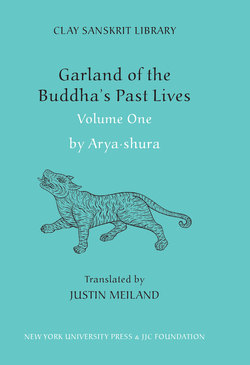Читать книгу Garland of the Buddha’s Past Lives (Volume 1) - Aryashura - Страница 16
На сайте Литреса книга снята с продажи.
Оглавлениеtial non-Mahayana tradition, also posit the same list of perfections.11
The Structure and Style of
the “Garland of the Buddha’s Past Lives”
In his “History of Buddhism in India” (1608 ce), Tara·natha states that Arya·shura intended to compose one hundred stories but died before he could complete the task (Khoroche 1989: xi). Although the figure of one hundred seems arbitrary, Tara·natha’s statement (based on unknown Indian sources) that the “Garland of the Buddha’s Past Lives” is incomplete can be supported by the fact that the text concludes, in an apparently abrupt manner, with the noticeably minor story of the woodpecker, an ending for which there seems no particular doctrinal or thematic significance.12
It has often been pointed out that the perfections provide a framework for the “Garland of the Buddha’s Past Lives.” But here too there appears to be disruption in the text. Although the first thirty stories are formatted on the first three perfections, of giving (dana), virtue (sila), and forbearance (ksanti), the structure breaks down with the last four stories, which cannot be said to reflect the fourth perfection of “vigor” (virya). The Tibetan commentator Yeshe Gyeltsen (ye shes rgyal mtshan) attempts to solve the problem by arguing that story 31 represents the perfection of vigor (virya), story 32 the perfection of meditation (dhyana), and stories 33 and 34 the perfection of wisdom (prajna), thereby conveniently completing the six perfections (Meadows 1986: 18). But this seems to stretch the content of the stories ________
